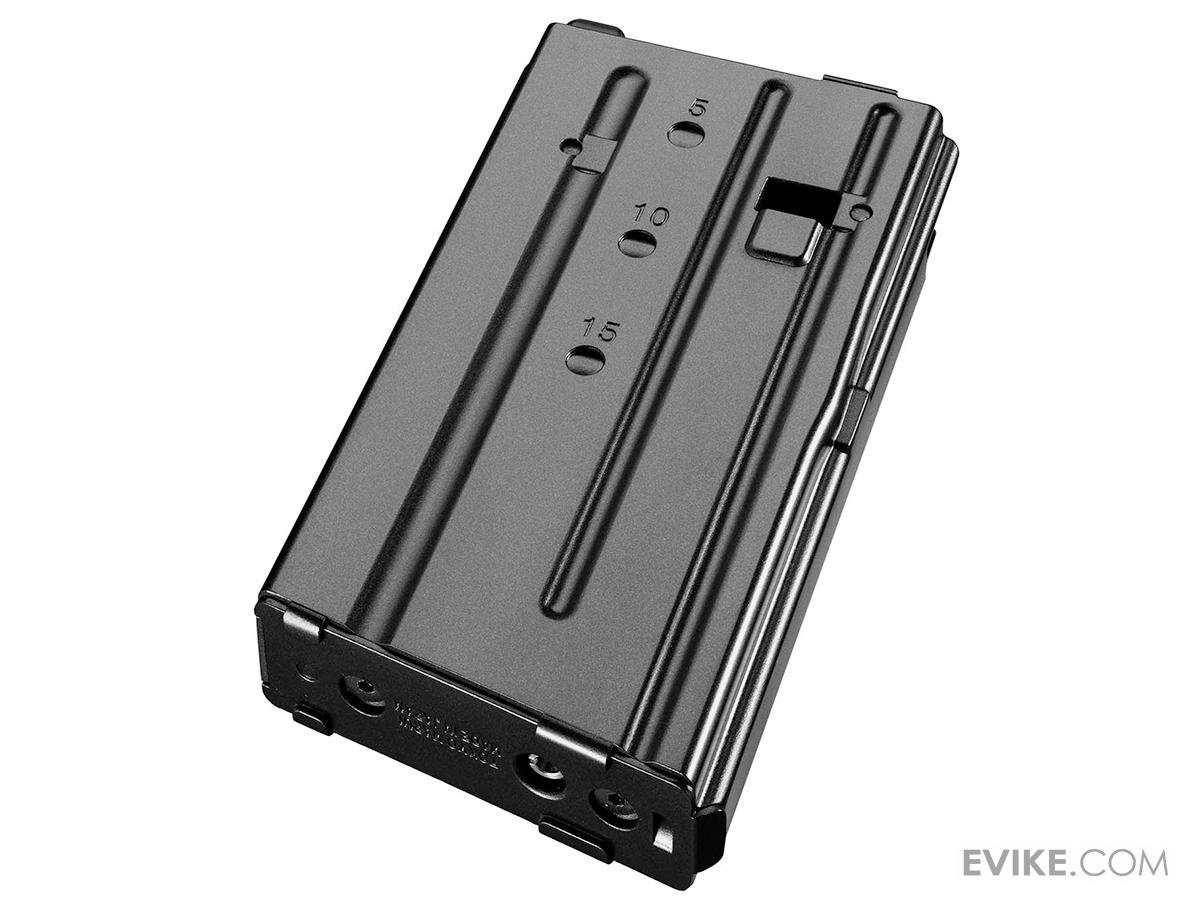
So, let’s start with something blunt. Tokyo Marui magazine M4 compatibility is one of those topics that sparks endless debates in the airsoft community. Some swear by the legendary fit and function of Tokyo Marui (TM) mags, while others curse the finicky tolerances and compatibility issues when mixing brands. And honestly, if you’ve ever stood on the field with a mag that won’t feed mid-game, you know why this subject matters.
This isn’t just about plastic and springs. It’s about trust. When you squeeze that trigger, you’re relying on a perfectly balanced relationship between your rifle and your magazine. And here’s the thing—Tokyo Marui set the standard decades ago, but the industry’s evolution has made “compatibility” a little more complicated than it looks on paper.
In this guide, we’re going to break it all down: the history, the practicalities, the myths, the problems, and the future of Tokyo Marui magazine M4 compatibility. Think of it as your ultimate roadmap—half deep dive, half conversation over coffee.
What Is Tokyo Marui Magazine M4 Compatibility?
At its core, Tokyo Marui magazine M4 compatibility refers to how well Tokyo Marui’s M4-style magazines fit and function in different brands of M4 airsoft rifles. Because Tokyo Marui pioneered the AEG (Automatic Electric Gun) market in the late 1980s, many manufacturers designed their rifles around TM’s “standard.”
But here’s where it gets tricky. While “TM-compatible” became industry shorthand, not every brand plays nice. Minor differences in tolerances, materials, and feeding lips can mean the difference between flawless performance and a jam-ridden nightmare.
Think of it like car parts. Just because two sedans both take 17-inch tires doesn’t mean every 17-inch tire will fit without adjustments.
Why Tokyo Marui Magazine M4 Compatibility Still Matters
You might wonder—why are we even talking about this in 2025? Well, the answer is simple: Tokyo Marui is still the benchmark.
-
Reliability: TM mags are known for their consistent feeding, even under high rates of fire.
-
Global Standard: Many brands market themselves as “TM-compatible,” but how true is that claim?
-
Aftermarket Ecosystem: From polymer mid-caps to high-capacity wind-up drums, the sheer volume of accessories designed around TM specs makes understanding compatibility essential.
-
Cost Efficiency: If you’ve already invested in a stack of TM mags, switching platforms becomes a financial question as much as a technical one.
In short, whether you’re a weekend skirmisher, a collector, or a competitive shooter, Tokyo Marui magazine M4 compatibility is one of those practical issues you can’t afford to ignore.
Features of Tokyo Marui M4 Magazines
Before diving deeper, let’s look at what makes TM M4 magazines special.
| Feature | Benefit | Notes |
|---|---|---|
| Precision Tolerances | Smooth fit and reliable feeding | Sometimes too tight/loose in non-TM brands |
| Durable Polymers | Lightweight yet strong | Early versions felt “plasticky,” but newer ones are solid |
| Spring Design | Even feed pressure | Less prone to misfeeds than some clones |
| Global Availability | Easy to source worldwide | Though often pricier than alternatives |
| Variety | Mid-caps, high-caps, drum options | Many third-party companies build around TM measurements |
Real-Life Case Study: The Field-Day Test
I’ll never forget a summer skirmish in Osaka back in 2017. A friend brought his freshly tuned G&P M4, boasting it was “100% TM-compatible.” He loaded a TM 68-round mid-cap and—click. Misfeed. Tried again—partial feed, then jam. He swapped in a cheaper clone mag, and it worked fine.
That day taught us something crucial: compatibility claims are often marketing shorthand, not guarantees.
On the flip side, another teammate with a bone-stock Tokyo Marui M4A1 was happily running 15-year-old TM mid-caps without a hiccup. That’s the beauty and frustration of it—it depends on both the mag and the rifle.
Comparisons With Alternatives
So how does Tokyo Marui magazine M4 compatibility stack up against other brands?
-
G&P: Generally close fit but can be tight; sometimes sanding required.
-
Classic Army: Mixed results—older models struggled, newer ones improved.
-
KWA/KSC: Known for proprietary quirks; not always TM-friendly.
-
ICS: Decent compatibility, but occasional wobble reported.
-
PTS/EMAGs: Built for realism, often work fine, but tolerances vary.
Pros of sticking with TM mags:
-
Guaranteed fit in TM guns
-
Longevity proven over decades
-
Global parts support
Cons:
-
Higher price point
-
Not always cross-compatible
-
Limited modern styling compared to Magpul/PTS
Challenges and Common Problems
Let’s be honest. Tokyo Marui magazine M4 compatibility isn’t perfect. Some of the most common headaches include:
-
Mag wobble: Slight side-to-side play that can disrupt feeding.
-
Tight fits: Forcing a mag in can damage both mag and receiver.
-
Feeding issues: Especially in high-RPS builds with stronger motors.
-
Brand mismatch: Not all “TM-compatible” rifles truly follow the spec.
-
Climate sensitivity: Cold weather can stiffen springs and reduce performance.
Solutions? Most players resort to DIY fixes—tape layers, light sanding, or swapping mag catches. It’s not glamorous, but it works.
Myths vs. Facts About Compatibility
-
Myth: “All TM-compatible guns take TM mags perfectly.”
-
Fact: Minor differences in machining make this hit-or-miss.
-
-
Myth: “Clone mags are always worse.”
-
Fact: Brands like PTS and G&G have produced excellent TM-fit mags.
-
-
Myth: “If it wobbles, it’s broken.”
-
Fact: Slight wobble is normal and often harmless.
-
Future Outlook
Looking ahead, the landscape of Tokyo Marui magazine M4 compatibility is evolving. With the rise of CNC receivers, modular mag wells, and smart electric gearboxes, precision is improving. Some companies are even experimenting with adaptive mag catches that automatically adjust to fit different mags.
Still, Tokyo Marui holds an edge. Their reputation for quality control and innovation—combined with their role as the original standard—means TM mags will remain relevant for years to come.
Practical Tips for Players
-
Test before you buy. Always try fitting a mag in your rifle if possible.
-
Stick to one brand if you can. Mixing increases chances of misfeeds.
-
Maintain mags. Clean, lubricate, and don’t overfill.
-
Carry backups. Even the best mags can fail mid-game.
-
Join forums. Communities often list brand-specific compatibility notes.
Expert Perspective
According to Kenji Sato, a Tokyo-based airsoft technician:
“Tokyo Marui magazines are engineered with extreme precision. But the airsoft market is not standardized. Think of TM as the gold standard. If you’re using another brand, it’s always about adaptation—sometimes minor, sometimes frustrating.”
That sums it up perfectly.
FAQs About Tokyo Marui Magazine M4 Compatibility
Q1: Do Tokyo Marui M4 magazines work in non-TM rifles?
Yes, often they do—but not always perfectly. Fit and feeding depend on the brand’s adherence to TM tolerances.
Q2: Are Tokyo Marui mags worth the higher price?
In most cases, yes. They’re reliable, durable, and have decades of proven use.
Q3: Can I modify mags to fit my rifle?
Yes. Common fixes include sanding, filing, or adding tape for a snug fit.
Q4: What’s better—mid-caps or high-caps for TM M4s?
Mid-caps offer realism and quieter operation, while high-caps provide longer sustained fire. Both are compatible.
Q5: Why do my TM mags misfeed in another brand’s M4?
Likely due to mag catch placement or receiver tolerances. Adjustments may help.
Q6: Do TM M4 mags work in gas blowback rifles?
No. AEG mags and GBB mags are completely different systems.
Q7: Which aftermarket brands are most TM-compatible?
PTS, G&G, and some Classic Army mags have strong reputations for TM fit.
Q8: Do TM mags perform poorly in cold weather?
Not drastically. But like all polymer and spring systems, cold can reduce efficiency.
Q9: Is wobble a sign of poor compatibility?
Not necessarily. Slight wobble is common and rarely impacts feeding.
Q10: What’s the safest way to ensure compatibility?
Buy TM mags for TM rifles—or research heavily before mixing brands.
Conclusion
At the end of the day, Tokyo Marui magazine M4 compatibility is both a blessing and a headache. On one hand, TM mags remain the gold standard in reliability and performance. On the other, the ever-expanding airsoft market means compatibility isn’t always guaranteed across brands.
If you stick with TM rifles and mags, you’ll enjoy decades of proven reliability. If you mix and match, be prepared to tinker. That’s part of the hobby’s charm, really—it’s equal parts shooting, collecting, and problem-solving.
So next time you slide a mag into your M4, remember: behind that satisfying “click” is a whole history of engineering, trial, and error.


